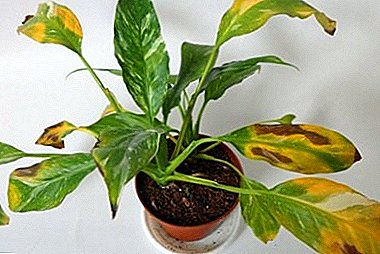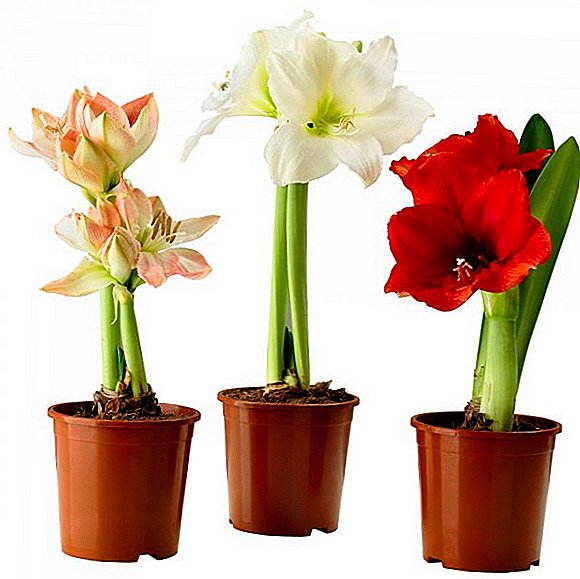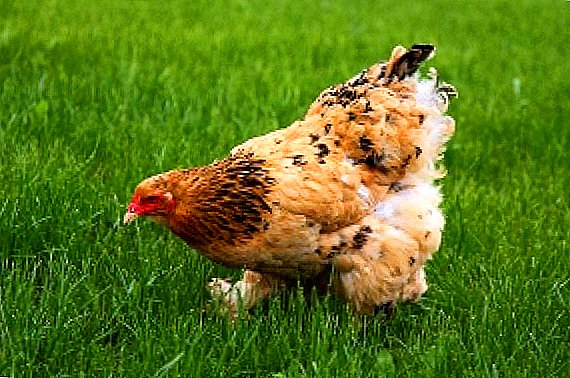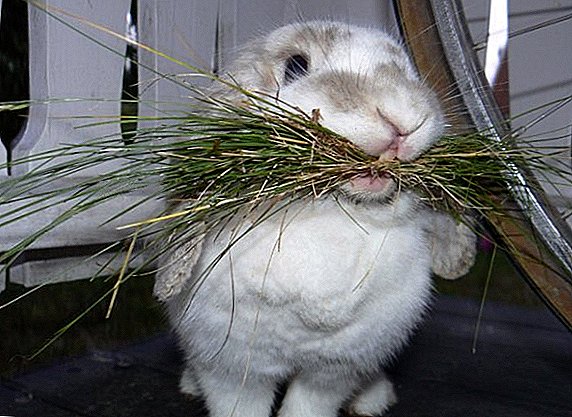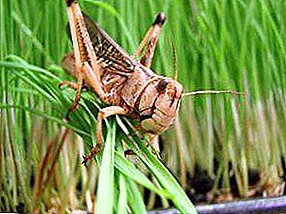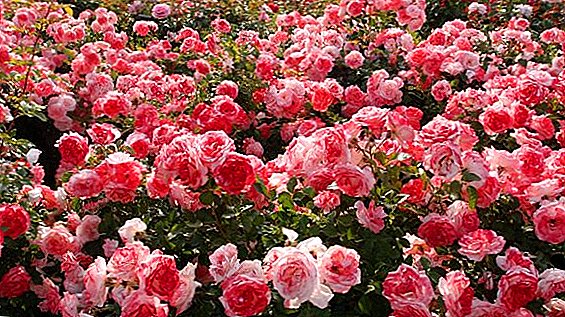 The rose is a universal flower that is not only suitable for decorating any events, but also makes us happy with its color on weekdays. In the latter case, there are home (garden) roses, which often adorn the territory of private estates. However, the question "How to plant a rose?" continues to excite many gardeners. Is growing roses really such a difficult job? Let's see.
The rose is a universal flower that is not only suitable for decorating any events, but also makes us happy with its color on weekdays. In the latter case, there are home (garden) roses, which often adorn the territory of private estates. However, the question "How to plant a rose?" continues to excite many gardeners. Is growing roses really such a difficult job? Let's see.
Landing rules "queen's garden"
"Queen of the Garden", namely, the so-called rose, - this is quite unpretentious plant, which in terms of care is not much different from other flowers. Although its features in the cultivation, it still has.
How to choose seedlings for planting
When choosing seedlings for the future decoration of your garden is better to pay attention to the grafted specimens. They are characterized by a more powerful and developed root system, excellent frost resistance, good survival and a large number of flowers on the bushes. Grafted seedlings are less susceptible to disease.
 In the care of such a plant, you have to spend more time, because grafted roses require the obligatory removal of wild growth (over time, it can turn a beautiful flower into an ordinary dog rose, since in most cases it is from him that all cultural varieties are planted). Own-rooted plants do not need such actions.
In the care of such a plant, you have to spend more time, because grafted roses require the obligatory removal of wild growth (over time, it can turn a beautiful flower into an ordinary dog rose, since in most cases it is from him that all cultural varieties are planted). Own-rooted plants do not need such actions.
Did you know? In England, Iran and the United States, the rose is considered a national flower.If we proceed from the appearance of the seedlings, then you can find on sale samples with both open and closed root systems (placed in containers or with a peat clod on the roots). It is best to give preference to a closed root system: when planted, the roots will be less damaged and will grow faster.
When choosing seedlings of roses, do not forget to pay attention to their foliage. It should not be lethargic or dry. Shoots of plants should also be different strength and not have cracks or stains. The number of shoots on a good seedling can not be less than 3.
When you buy a plant with an open root system, you will have a chance inspect the roots and determine their condition. And in this case there should be no damage.
If the selected seedling does not meet the specified requirements, then roses with such features can not be a worthy decoration of your yard.
The choice of landing site, what should be the lighting and temperature
 Roses love the sun, so when choosing a suitable place for growing in a garden, it is recommended to pay attention to sunny areas. While in the shade, the roses stop blooming, dark spots appear on their leaves and blind shoots are formed. Often the plant affects powdery mildew. To avoid this, you need to pick up a bright, well-ventilated area, which will be protected from the strong north wind.
Roses love the sun, so when choosing a suitable place for growing in a garden, it is recommended to pay attention to sunny areas. While in the shade, the roses stop blooming, dark spots appear on their leaves and blind shoots are formed. Often the plant affects powdery mildew. To avoid this, you need to pick up a bright, well-ventilated area, which will be protected from the strong north wind.
As for the characteristics of the soil, it should not be clay or sandy, and all other options are quite acceptable. It is also worth paying attention to the fact that the chosen landing site is located away from the groundwater, which come close to the surface.
When you need to plant roses, tips on preparing the soil for planting a flower
Before answering the question "How to plant roses?" you need to figure out exactly when you can land. Shrubs are planted 2 times a year: in spring and autumn (before the onset of frost). The autumn planting is preferable, because until spring all the plants have time to settle well and bloom earlier than the roses that were planted in the spring.
In mid-latitude, an autumn landing is carried out from mid September to mid October, and if the seedlings are planted earlier, then there is a high probability of awakening dormant buds, which will die immediately with the onset of cold weather.
 Too late planting is considered unfavorable, since saplings may not have time to take root and will also suffer from frost. If you have “guessed” with the planting dates, after 10-12 days new young roots will begin to appear on the seedling, which will have time to adapt before the onset of frost and calmly survive the cold winter.
Too late planting is considered unfavorable, since saplings may not have time to take root and will also suffer from frost. If you have “guessed” with the planting dates, after 10-12 days new young roots will begin to appear on the seedling, which will have time to adapt before the onset of frost and calmly survive the cold winter.
In the spring (if the roses were planted in the fall) such plants begin to quickly form the root and aerial parts, and flowering occurs along with old, perennial bushes. At the same time, the flowers that were planted in the spring, on average bloom 2 weeks later and require more attention.
Before planting the plants, the soil must be properly prepared by feeding them with mineral and organic fertilizers. Of the organic options, the best solution is manure, and the first top-dressing with complex mineral fertilizer should be thorough, but not more than 15-20 grams per bush (a large dose will adversely affect flowers).
If spring planting of plants is foreseen, then in the fall it will be necessary to dig a capacious pit up to 1.2 m deep and half a meter in diameter. It is filled with drainage (branches, large crushed stone, expanded clay) are suitable, and a mixture of garden soil and humus is placed on top, adding mineral fertilizers along the way. When planting roses in the fall, pits for shrubs are prepared for 1-1.5 months.
How to plant a rose
 Planting roses begins with the selection of seedlings and digging a hole in a suitable place. We have already dealt with the first item, and as for the second, the pit in the ground must be of such dimensions that the roots of the rose feel free. If we are talking about fertile soils, then half a meter of depth and the same width will be quite enough. For clay soil, which must be pre-fertilized (humus or compost is mixed with rotted manure and soil), with the same width of the pit, it is necessary to dig a depth of 60-70 cm.
Planting roses begins with the selection of seedlings and digging a hole in a suitable place. We have already dealt with the first item, and as for the second, the pit in the ground must be of such dimensions that the roots of the rose feel free. If we are talking about fertile soils, then half a meter of depth and the same width will be quite enough. For clay soil, which must be pre-fertilized (humus or compost is mixed with rotted manure and soil), with the same width of the pit, it is necessary to dig a depth of 60-70 cm.
Important! Fertilizers should not be in contact with the roots of seedlings, so they are sprinkled with a layer of soil.Before placing the seedling in the pit, you need to pour water into it and wait until it is absorbed. Then a rose with a closed root system is immediately placed in the soil, and if the roots are open, they will have to be cut to one third the length and soak in water (or root growth stimulator) for a few hours.
Given the size of the bush of a particular type and the rate of its growth, when planting plants, it is recommended to observe a certain interval (from 0.5 m to 1 m). However, the distance between the bushes can be determined independently, based on specific goals. For example, bush roses will look great not only in general, but also in single plantings. In the rose garden you must observe the distance from meter to one and a half (or 1.2 m) from the neighboring plant.
How to care for a rose in the garden
Usually roses do not require increased attention, but this does not mean that proper planting and care are not important for these flowers.
How to water a rose
 Caring for roses in the garden provides for abundant, but infrequent watering. The ground under the bushes should not dry out, and the first sign that your rose needs water is wilted flowers and leaves of the plant. Usually, an average rose bush requires about 5 liters of liquid, while a climbing plant requires 15 liters.
Caring for roses in the garden provides for abundant, but infrequent watering. The ground under the bushes should not dry out, and the first sign that your rose needs water is wilted flowers and leaves of the plant. Usually, an average rose bush requires about 5 liters of liquid, while a climbing plant requires 15 liters.
The water used for irrigation should not contain chlorine or be too cold, because for normal life support of the bush it should be watered with slightly warmed water in the sun. The larger the bush becomes (roses are constantly growing and forming), the more water will be spent on watering.
Flower feeding rules
If you are breeding roses, then you probably know that caring for them and growing them in the garden require periodic fertilization to the soil. In this plan it is better to give preference to a natural top dressing - to manure. The ideal option is horse manure, which has at least six months of exposure. The waste of chickens or pigs (especially in the fresh form) can only harm the plants: because of the acid contained in them, the young shoots simply burn. Fresh manure has a bad effect on soil, blocking nitrogen.
In the process of budding, it is necessary to feed the plant with calcium nitrate solution (1 table spoon per 10 liters of water), and during the active growth and development of the rose, it is necessary to water it every 10-15 days with infusion of herbs, a solution of mineral fertilizers, infused mullein or chicken manure . In order for the plant to better perceive the fertilizer applied (for example, mineral fertilizers), it must be fed in a dissolved form, immediately after the next watering. In the second part of July, roses stop feeding. Bushes begin to prepare for the cold.
Did you know? Like people, roses are also able to survive stress. In this state, they are in a period of strong heat, cold or prolonged rains. Help survive they can this time by spraying the plant with "Zircon", "Epin," "Ecosil" or sodium humate.
How to cut a rose
 It is very important for roses to form a bush with the help of a mechanical action, this is especially important when caring for a plant in open ground. Pruning is carried out by removing all damaged and weak branches, as well as those that are directed into the bush bush. After that, it is more clear how to further form the bush.
It is very important for roses to form a bush with the help of a mechanical action, this is especially important when caring for a plant in open ground. Pruning is carried out by removing all damaged and weak branches, as well as those that are directed into the bush bush. After that, it is more clear how to further form the bush.
Important! It is necessary to prune the roses before the buds swell on its branches.If a same two branches interfere with each other, then leave the one that is located more successfully. Also, preference is given to younger shoots with light bark.When growing a grafted plant, you will inevitably encounter the germination of a multitude of excess shoots at the base of a bush (this happens in spring). These shoots take away a lot of power from the plant, which means there is practically no lush blooming. therefore you need to leave only the most powerful, strong and tall of them, which in the summer will be able to give flowers. All others can be safely cut.
Pruning roses after flowering is done at the request of the gardener, but during the procedure it is necessary to leave at least two buds on the shoots. Do not be afraid to perform this procedure: after cutting the rose more actively acquires new greenery. Caution should be exercised only with the rose, which is not so quickly regaining shape or the soil under it is too poor.
With the onset of autumn, all faded flowers and damaged shoots are removed from the bush. All sections are immediately treated with garden pitch.
Plant Transplant Method
 In some cases, caring for a plant provides for a rose transplant to a new place. However, first you need to make sure that the growing conditions at the new place will not differ from the previous ones: the rose will be able to receive enough sunlight and will be protected from the wind. If this is all right, then proceed to the preparation of the pit, filling it according to the requirements of the plant.
In some cases, caring for a plant provides for a rose transplant to a new place. However, first you need to make sure that the growing conditions at the new place will not differ from the previous ones: the rose will be able to receive enough sunlight and will be protected from the wind. If this is all right, then proceed to the preparation of the pit, filling it according to the requirements of the plant.
First of all, remove all weed roots from the selected location. Then, leave the pit for a couple of days - the earth should settle. After that, it will be possible to proceed to digging out a bush. You need to try to dig a rose with a big earthy ball. This is quite a difficult task, because the land under the rosaries is very loose and easily crumbling. Therefore, before digging to keep the land better, it should be watered, and to facilitate the work near the bush it is tied.
Important! It is quite difficult to cope with a large rose bush, so it’s better to immediately ask for help.Preparing a new pit for transplanting a plant, you must perform the following steps:
- On the perimeter of the rose, dig a small trench, gradually deepening it.
- Tie an earthen clod with a cloth or plastic (food film is best suited for this purpose) and begin gradually to break under the base of the bush.
- Too long roots that will interfere can be chopped off immediately (there is nothing to worry about, the main thing is to provide good care for the roses in the future).
- Place a solid stand under the base of the bush (this can be a shovel with a sturdy handle).
- Using the lever, remove the bush from the ground.
- Put the rose on the fabric prepared in advance or bag and drag to the right place (if transplanting is performed within the same garden).
- For long-term transportation of the plant, it is necessary to preserve it with an earthen clog up to the intended landing, wrapping it with a damp cloth (the cloth should not dry out);
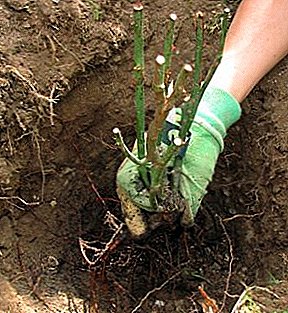
- Place the dug rose in the prepared hole and check the height so that after planting the bush is covered with earth at the same level as before the transplant (if necessary, deepen the hole or, on the contrary, raise it).
- Cover it up to half and partially remove the strapping from the coma.
- Water the soil well and wait until it is completely absorbed (one bucket of water will be enough for a small bush, and 1.5-2 buckets for a large bush).
- Fill the ground (to the top of the pit), completely remove the harness and water the plant again.
- When the liquid is absorbed, cover a little more ground and tamp it well (there should be no air voids around the root system of the rose).
It happens that a rose "does not notice" the transplant and immediately takes root in a new place, but more often, especially when transplanted in the spring or summer, the rose will recover for a long time. Roses are quite tenacious, therefore, both care under standard conditions and their transplant is a laborious process, but not dangerous for roses.
How to prepare a rose for winter
Preparing the rose for winter begins in the middle of summer, stopping to feed the bushes with nitrogen fertilizers (at this time the roses get potash and phosphorus baits). From mid-September, faded blossoms are cut off, allowing the rose to fade before hibernation. Many gardeners are interested in the question: “Should garden flowers be cut in autumn?” This is not a mandatory action, but in some cases pruning shoots makes it easier to cover the plants.
 In the hybrid tea species, ½ the height of old branches is shortened in the autumn, while park roses and scars are shortened only by 1/3 of their height. Climbing, miniature and ground cover species do not prune, trying to cover them along the entire length.
In the hybrid tea species, ½ the height of old branches is shortened in the autumn, while park roses and scars are shortened only by 1/3 of their height. Climbing, miniature and ground cover species do not prune, trying to cover them along the entire length.
Before the shelter of garden roses, they cut off all the leaves and inflorescences, because under the snow cover they can become a source of fungal diseases. In addition, on the back of the leaves are often preserved pests. To destroy them, Before the plants are covered with foil, the bush and the soil under it should be treated with 5% solution of copper sulfate. As well as caring for roses, preparing plants for winter will not take much time and energy from you, the main thing is to conduct all the activities described on time.
How to propagate roses
There are not many ways to breed roses, However, the desire of gardeners to have as many of these wonderful flowers as possible on their plot makes them study each method thoroughly. Let us and we will consider each of them.
Cuttings
The method of breeding garden roses cuttings is good because rooted plants will not give wild shoots. The stalk is part of a strong shoot, and is cut near the leaf bud. After germination using rooting stimulants, when roots appear on the cuttings, you get a ready seedling that can be transferred to the ground.
The propagation of roses by cutting method involves rooting of two types of stem shoots: lignified and lumbering and most often used for breeding room or park roses. Basically cuttings are cut when the green shoots of roses begin to harden (at the beginning of the flowering bush), but too lignified specimens are not suitable for this role.
Seeds
 Propagation of roses by seeds is rare. First of all, the result has to wait long enough and secondly, nAnd when you can not be completely sure that it will be positive. Seed germination in the propagation of roses leaves much to be desired.
Propagation of roses by seeds is rare. First of all, the result has to wait long enough and secondly, nAnd when you can not be completely sure that it will be positive. Seed germination in the propagation of roses leaves much to be desired.
Did you know? Usually the seed method of propagation of flowers is resorted to when breeding new varieties of roses or hybrids. He practiced for breeding wild roses, although not all species give full seeds.
Budding rose
The budding of the rose involves the following steps. On the bark of the plant stem (as close as possible to the ground level) it is necessary to make a T-shaped incision and insert a kidney of the selected cultivar into it. After that, it is fixed with a film. The graft can use the advanced root system of the stock. The operation itself is simple, although it requires some experience.
Reproduction by layering
Climbing and shrub roses, which are mainly found in gardens, propagate by layering. This method is considered the most suitable, largely due to the fact that such plants have long and strong stems.
 The sprout of a rose is cut at the bottom (by annular cuts of the bark), after which a match or sliver is inserted into the cut. The cut part of the shoot is placed in a pre-dug shallow groove in the ground and fixed there. Свободный конец необходимо привязать к вбитому заранее колышку. Сверху побег присыпают землей (верхушка должна оставаться снаружи).
The sprout of a rose is cut at the bottom (by annular cuts of the bark), after which a match or sliver is inserted into the cut. The cut part of the shoot is placed in a pre-dug shallow groove in the ground and fixed there. Свободный конец необходимо привязать к вбитому заранее колышку. Сверху побег присыпают землей (верхушка должна оставаться снаружи).
Over time, the rooted escape must be cut off from the parent bush (in most cases, this happens next spring, even though it can take root by autumn). In this way, you can get new bushes not only from own-rooted roses, but also from grafted ones.The Rose - wonderful plant which with proper care will delight you for many years.



